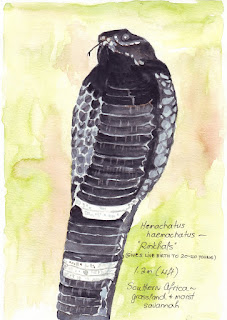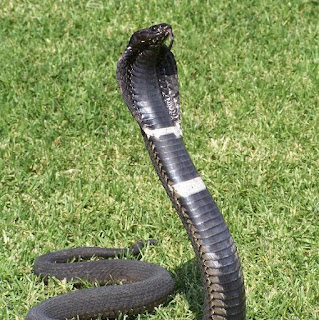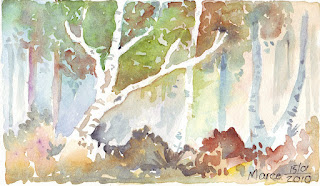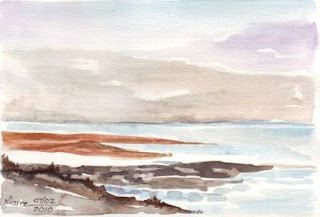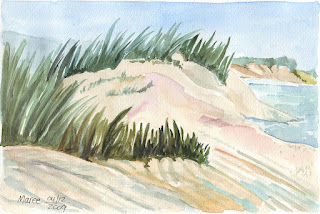"Since it doesn't cost a dime to dream, you'll never short-change yourself when you stretch your imagination."~ Robert SchullerA daily practice of sketching and painting gives you a chance to exercise the big three P's - practice, practice, practice!
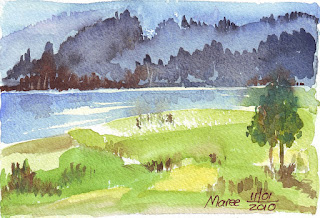 "Albasini Dam" watercolour on Bockingford 300gsm - Maree© (no sketching)
"Albasini Dam" watercolour on Bockingford 300gsm - Maree© (no sketching)This sketch is remembering childhood days in the 1950's, I was about 10 years old, when I lived in the Limpopo Province (then it was known as the Northern Tansvaal) in Pietersburg (Now Polokwane), when I used to go fishing with my dad at the Albasini Dam, surrounded by the Soutpansberg Mountains, at Louis Trichardt. Once we'd arrived and set up the fishing rods, we'd sit for hours waiting for a bite, chatting about everything and nothing in particular, sipping cold coffee from the flask my mother had packed.
A bite, however, would result in scrambling for the fishing rod, excitedly reeling the fish in, me not being able to wait to see what we'd caught. Most of the time it was only a Barbel, a carp-like freshwater catfish that cooked beautifully over our camp fire. My dad would gut and clean it, slicing it into big, round, fat steaks, and then fry it together with slices of cold potatoes, and devour it with fresh home-made bread and thick butter.
My mother always packed far too much food for our trips - the fresh, home-made bread she'd baked the night before, hard-boiled eggs, baked potatoes still in their foil, beef sausages and gherkins and pickles. And, of course, the coffee flask.
 Barbel catfish
Barbel catfishThe Albasini Dam was built in 1952 and is named after Joao Albasini, who was born 1 May 1813, in Lisbon, Portugal. He came to Lourenço Marques in 1831 and became a slave trader and Elephant hunter. The remains of his trading post can be found at the new Phabeni Gate, 10 km from Hazyview.
This dam was built primarily to supply the Levubu Irrigation Scheme. The dam has a capacity of 28,200 cubic meters (1,000,000 cu ft), and a surface area of 3.498 square kilometers (1.351 sq mi) and the wall is 34 meters (110 ft) high.
 A small tributary off the Albasini Dam
A small tributary off the Albasini Dam - The upper Luvuvhu, Sterkstroom, Latonyanda, Dzindi, Mukhase, Mbwedi and Mutshindudi are steep, narrow rivers dominated by cobble riffles and occasional pools with a few bedrock rapids. These were our favourite fishing spots.









